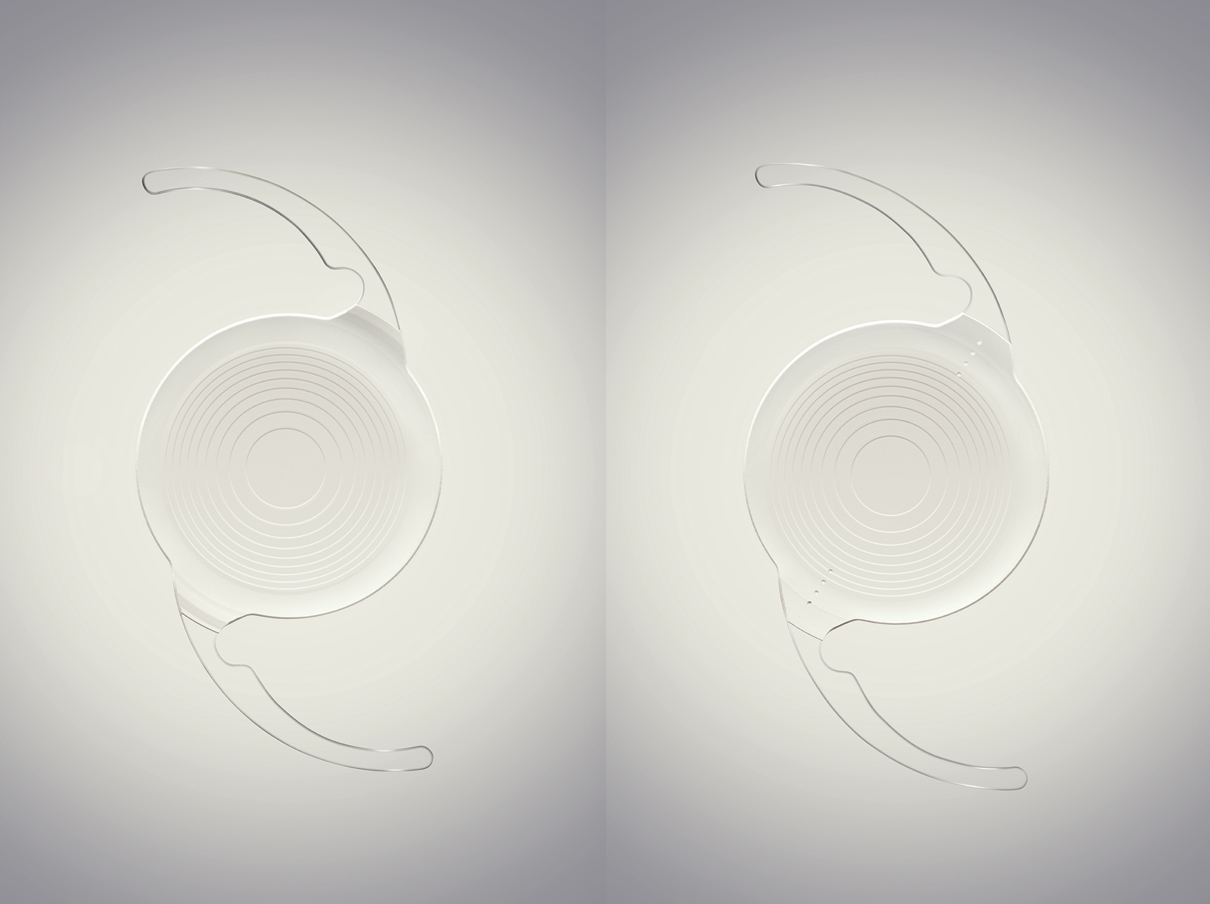For years, the simultaneous correction of distance and near vision has been the ideal refractive outcome of cataract surgery. Monovision, accommodating IOLs, and multifocal IOLs have been the most common approaches used to achieve spectacle freedom for cataract patients. My preferred plan for patients desiring spectacle independence has been to use the lower-add Tecnis multifocal lens (Abbott Medical Optics) and correct astigmatism greater than 0.50 D. For patients with significant astigmatism requiring a toric lens, I offer monovision. The arrival of the Tecnis Symfony IOL (Abbott Medical Optics; Figure) to the lens market brings with it a great deal of potential for cataract surgery.

Figure | The Tecnis Symfony and Tecnis Symfony Toric.
The Symfony IOL diffracts light in a way that allows an extended range of focus, rather than focusing light at distinct points. Monofocal IOLs have one distinct focus, which can be set by the surgeon for distance, intermediate, or near. Multifocal IOLs have two distinct foci for light, at distance and intermediate or near. The proposed optics of the Symfony are geared toward elongating the eye’s focus, rather than producing two distinct focal points. This elongated focus allows a more continuous spectrum of sharp vision from distance through intermediate and to near points. Additionally, because light is not focused at two distinct points, glare and halos should not be as noticeable.
The Symfony IOL offers many advantages to patients, including the absence of a blurry zone of vision between two distinct focal points. With this comes the possibility of reduced glare and haloes. Additionally, the extended depth of focus, which is more consistent with accommodating lenses, is not dependent on postoperative movement of the IOL. The signature benefit of the Symfony IOL is that it comes in a toric form (Figure), allowing patients with astigmatism to have the opportunity to achieve functional vision at distance and near.
An important consideration when selecting this lens is the patient’s desired quality of near vision. The defocus curve of the Symfony lens shows vision between 20/15 and 20/20 from distance to approximately 66 cm (2 ft). Vision ranges from 20/20 to 20/30 in the intermediate range of vision until about 50 cm (19 in) and then drops to 20/40 at 40 cm (1 ft). For patients looking for crisp vision for close reading, this lens may not meet expectations.
Video | Elizabeth Yeu, MD, shares her predictions for presbyopia management with the Symfony IOL.
The Symfony IOL, in addition to opening up a range of new refractive possibilities, will likely reshape our preoperative counseling of patients. Surgeons must better gauge patients’ near vision needs and activities in order to optimize the use of the Symfony and lower-add multifocal lenses in the appropriate cases. Time will tell, but the capability of producing an extended range of near focus while retaining crisp distance vision, in addition to its availability in a toric form, will likely earn the Symfony lens a lasting spot in the cataract surgeon’s arsenal.

